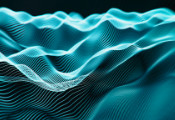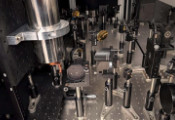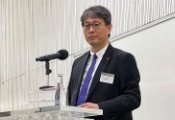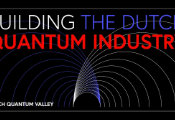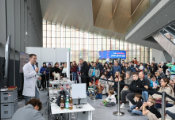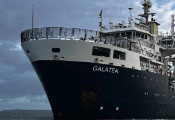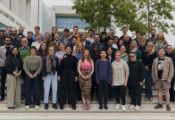How to Raise a Quantum Fermi Gas Experiment
June 17 2025 -- When physicists cannot crack the inner workings of a given physical system, they may try to simulate it through a better-behaved, more obliging environment. It's an approach that makes sense on paper but doesn't always look like a simplification: how does trapping and cooling atoms to very low temperatures as a way to study the properties of electrons in solids sound straightforward? And yet ultracold atom systems have become a cornerstone for the physics of the 21st century.
An ultracold fermionic gas of atoms was first created in the laboratory in 1999 by Dr Deborah Jin at JILA: by 2005 researchers had shown that this gas supported superfluidity, as predicted theoretically. In practice, a quantum Fermi gas can be obtained with the same cooling techniques – most notably, magneto-optical traps (MOTs) and evaporative cooling – used for BECs. The starkest difference is that bosonic rubidium atoms are replaced by alkali atoms with an odd number of electrons, protons and neutrons: relevant examples are specific isotopes of potassium and lithium. As elastic collisions between identical fermions are suppressed at ultracold temperatures, evaporative cooling must be adapted to use a mixture of two atomic species, for instance bosonic rubidium and fermionic potassium atoms.
A research group with a strong track record in pioneering research with ultracold fermionic gases is found in the Department of Physics at ETH Zurich: the Quantum Optics group led by Professor Tilman Esslinger. One of the group's teams works with an experimental setup, known as the Lattice Lab, that has been running for over two decades without significant interruptions or disruptions, consistently pushing the boundaries of what can be learned from an ultracold Fermi gas trapped in an optical lattice.
Working with "a lab in a trap"
First steps
When Esslinger came to ETH Zurich, he had pioneered Bose gases in optical lattices. He knew much less about fermionic systems, which was partly what drew him to them. "It's important to walk into the fog," says Esslinger to summarise his view of academic research. "If you don't venture into unknown territory, you're not going to find much that's new and interesting." In 2005, Esslinger's group stepped out of the fog to report the first characterisation of a Fermi gas of potassium atoms trapped in a three-dimensional (3D) optical lattice. These findings lay the foundations for the experimental explorations that followed, which have tackled topics ranging from quantum magnetism to topology.
An optical lattice is an artificial crystal structure obtained by crossing counter-propagating laser beams in one, two or three spatial dimensions. The resulting laser standing waves create a periodic potential for atoms loaded in such a lattice; with the appropriate choice of laser frequency, atoms get trapped in lattice sites identified by the potential's minima, which correspond to the intensity maxima of the standing waves.
The concept of an optical lattice was originally developed to understand atom-light interactions, but it became an excellent tool for exploring the rich physics unlocked by tuning the way particles – bosons first, and later fermions – interact with each other in a periodic potential. In 1998, theorists had proposed that ultracold atoms in the periodic potential of an optical lattice would make it possible to simulate the Bose-Hubbard model, a bosonic derivative of the Fermi-Hubbard model, which is widely used to describe theoretically the electronic properties of solids.
Working with fermions in an optical lattice, Esslinger and his team set out to create a Fermi-Hubbard model in the laboratory. In their 2005 paper, they noted that "the unique control over all relevant parameters in this system allows us to carry out experiments which are not feasible with solid-state systems." The controllability and tunability of the Lattice Lab setup are indeed crucial to its success and longevity. These features have allowed the team to study a variety of concepts in condensed matter physics and, more recently, to start exploring what lies beyond.
Anatomy of an experimental setup
The apparatus is built around the three main stages required to arrange the ultracold fermionic atoms on the optical lattice. Initially, a mixture of bosonic rubidium and fermionic potassium atoms is captured by laser light in a MOT. After switching off the laser light and holding the atoms in place with magnetic forces, the atoms are magnetically transported to an ultra-high-vacuum glass cell. Here, the most energetic rubidium atoms are removed thanks to evaporative cooling, whereas the potassium atoms are further cooled through thermal contact with the remaining rubidium particles in a process known as sympathetic cooling. From within the glass cell, the potassium atoms are then placed in an optical dipole trap that allows the team to prepare them in mixtures of two spin states. Subsequently, this quantum gas is loaded into the optical lattice through bespoke preparation and alignment procedures.
In the laboratory, the MOT and the glass cell – the cell being the heart of this "lab in a trap", optically accessible thanks to its glass walls – are built on one table, also known as the experiment table. The part of the setup that corresponds to the preparation of the laser light for the MOT and the optical lattice happens on an adjacent table; the laser light reaches the experiment table through optical fibres. This stark separation of setup components isn't a quirk: the team cannot risk any leak of resonant photons into the glass cell, as the level of sensitivity at which they operate is such that even a single photon at the wrong wavelength would jeopardise the entire quantum gas experiment.
To study the quantum Fermi gas, the team uses time-of-flight absorption imaging: they first let the atoms expand ballistically by switching off temporarily the magnetic field and the lasers for the lattice, then they shine a resonant laser onto the atoms and capture the resulting shadow onto charge-coupled device (CCD) cameras. From these pictures they can extract fundamental information such as the total atom number and the atoms' momentum distribution.
Much to explore
In 2008, Esslinger's team achieved a feat that had only been previously demonstrated with gases of bosonic atoms: they created a Mott insulator of a repulsively interacting two-component Fermi gas. The researchers characterised the insulating behaviour of their system by looking at the fraction of atoms in doubly occupied lattice sites. The double occupancy fraction is predicted to increase if atoms are non-interacting, whereas it should be suppressed for repulsive atom-atom interactions: the experimental data in the paper showed good agreement with theoretical predictions. In a subsequent study of quantum magnetism, the observation that atoms of different spins tend to arrange themselves next to each other further confirmed the potential of the Lattice Lab as a simulation platform for condensed matter physics.
The 2010s marked a new direction for the setup as an additional knob drew increasing attention from the team: the geometry of the optical lattice, which the team showed to be tunable in a way that opened the path towards topological effects. If particle interactions are crucial to explaining some phenomena in solids, such as insulating phases, the band structure and its topology are fundamental too. For example, the peculiarity of graphene comes to a great extent from topological defects (in momentum space) in its honeycomb lattice structure: these defects are known as Dirac points, and what the Lattice Lab team showed in 2012 is that it is possible to create and manipulate Dirac points in their ultracold Fermi gas, which they loaded into a lattice that could be shaped into a honeycomb structure. It turned out that the controllability of the setup also applied to the Dirac points, which could be moved around on the lattice and even merged. In the laboratory, tuning the lattice geometry requires an additional standing wave, collinear with another laser beam in one direction but detuned in frequency. This addition modifies the periodic potential felt by the atoms; varying the relative intensities of the four laser beams makes it possible to create different lattice geometries.
Thinking about the path that led to the 2012 paper, Esslinger points out that the lattice geometry they used to create Dirac points wasn't initially meant for that purpose. "Keeping an open mind is key, so that you don't overlook something interesting," he says. An open mindset and a dose of serendipity were crucial to a highly significant work published in 2014. By adding a sinusoidal modulation of the honeycomb lattice position along two spatial directions, Esslinger and his team were able to realise the famous topological Haldane model. Nobel laureate Duncan Haldane's finding shows that the origin of the quantum Hall effect lies in the breaking of time-reversal symmetry. When he published his findings in 1988, Haldane observed that "the particular model presented here is unlikely to be directly realizable." The path towards the experimental demonstration of the topological Haldane model needed an extra spark: this came from Professor Hideo Aoki, a theorist at the University of Tokyo who came to visit the physics department at ETH in 2012. It was Aoki who pointed out to Esslinger and coworkers that a circular modulation of the lattice position should do the trick – and so it did.
Fast forwarding to present-day activities, the Lattice Lab team has been exploring the connections between topology and interactions by realising a so-called Thouless pump with their quantum gas. A quantum pump can generate a particle current in a system through periodic modulation of some of the system's parameters in the absence of any external bias. A Thouless pump realises particle charge transport, without the need for net external electric or magnetic fields, through a cyclic evolution of the system's Hamiltonian: the transported charge is quantised and is entirely determined by the topology of the pump cycle – which makes it a topological quantum pump. The physics of it may sound daunting, so it may help to view the Thouless pump as a quantum incarnation of the celebrated Archimedes screw. An observation made on another experiment, this one performed with Professor Tobias Donner and his team, inspired the Lattice Lab crew to develop a simple and robust scheme for Thouless pumping based on a slowly moving interference pattern in the lattice. This advance, together with an improved loading sequence for the atoms into the lattice, allowed the researchers to study the interplay between topological transport and interparticle interactions. What Esslinger finds fascinating about these recent results is that they're far from being a simple proof of concept, in that they have opened new research directions beyond topology.
Working together
They say it takes a village to raise a child. As it turns out, it takes a village to run some experimental setups too. Generations of PhD students and postdocs have taken care of this ever-evolving apparatus, and in return the setup has offered these researchers a prime playground to grow as scientists.
As Esslinger explains, for such a setup to be operated continuously it's highly desirable – albeit not always possible in practice – to ensure a temporal overlap between members who will soon leave the group and those who have newly joined it. A team member often carries with him or her years of experience working with the experiment: lab books cannot make up for someone's intuition as to why a piece of equipment doesn't behave as expected. Still, lab books are a treasure trove of information about the apparatus. This is why a future development Esslinger would like to pursue is to build a custom artificial intelligence tool to help the Lattice Lab team mine their lab books more effectively.
Teamwork and knowledge transfer are absolute requirements, as is taking care of technical documentation. All team members share this responsibility. The current members of the Lattice Lab are Dr Konrad Viebahn, postdoctoral researchers Yann Kiefer and Zijie Zhu, and PhD students Giacomo Bisson, Lars Fischer, Marius Gächter and Samuel Jele. "It's amazing to see how well this setup was built over the years, how much thought went into finding long-lasting solutions," says Kiefer. This isn't a given, especially because many components were built by team members and not bought commercially.
Even with the best knowledge transfer system in place, it happens that the setup teaches the team a lesson in the hard way – something will break or not behave as it should – and time will be spent relearning and rediscovering tricks or fixes, as is always the case in science. There may come the point where it's advisable to tap into the living human memory of the Lattice Lab: a current team member may then reach out to a past member, for example, to ask a question about a specific element of the setup. "This usually works very well, and people are happy to help," says Esslinger.
Looking ahead
At the moment Fischer, Kiefer, Viebahn and Zhu take care of most daily operations and research activities on the setup. Bisson, Gächter, Jele and Viebahn focus on a most recent and important development: setting up a second Lattice Lab that will expand further the capabilities of the "lab in a trap". Among the team's goals are a much faster data acquisition, lower temperatures as well as site specificity, that is, the ability to tell where their ultracold fermions are on the optical lattice. The latter aspect is particularly crucial in the light of a newly explored research direction that's shifting the researchers' interests towards quantum computation. As Viebahn explains, the topological pump realised in 2023 has unlocked a new form of interparticle connectivity, because it makes it possible to shuttle atoms around the lattice. "We tuned the interparticle interactions during pumping and realised that two atoms that meet while they're pumped in opposite directions perform entangling gate operations," which are a fundamental building block of any quantum computer. The researchers' initial findings confirm that their topological pump can controllably create and transport entanglement within an optical lattice, opening the way to applications in quantum information processing. "With the fog lifting over the role of interactions in a Thouless pump, we have found uniquely scalable quantum gates," says Esslinger. The Lattice Lab and its team are set for yet another exploration at the cutting edge of physics.

